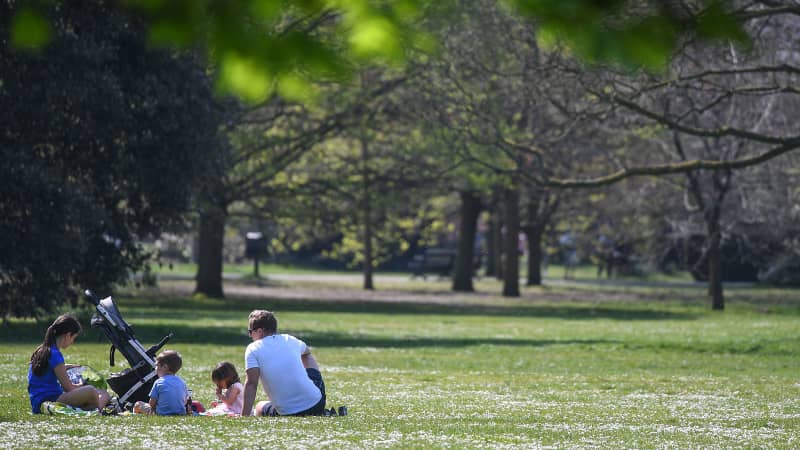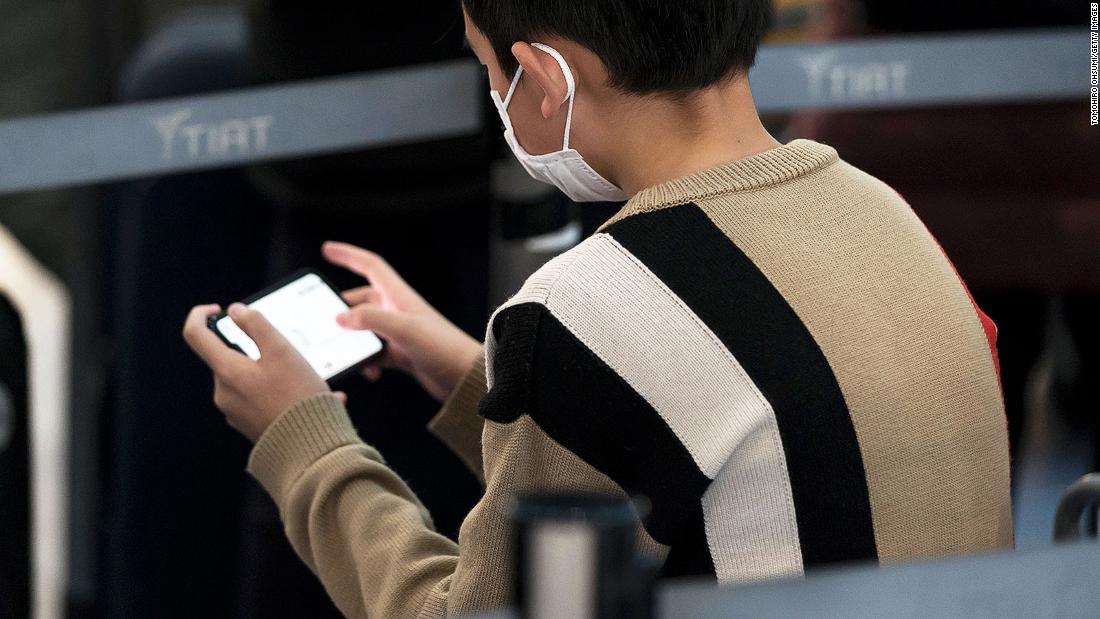(CNN) — Across the US, Covid-19 cases are rising again, primarily in unvaccinated populations. Most of these cases are due to the highly infectious delta variant of SARS-Cov-2, the coronavirus that causes Covid-19. Many children are among those who aren’t vaccinated, simply because no vaccines have been authorized for children under 12. About a quarter of children aged 12-15 years have been vaccinated. Given the rise in cases and the inability to vaccinate young children, many parents are concerned about the safety of traveling this summer.
The risk of Covid-19 associated with travel is largely determined by how you will travel, where you’re going, who will be there and what you will do there. By assessing these variables, parents can make informed decisions about their travel plans.
1. How much risk does Covid-19 pose for kids?
When thinking about Covid-19 and unvaccinated children, two types of risk should be considered — both the direct risk for the child and the risk of transmission to others. Children develop severe disease from Covid-19 far less commonly than adults, and they die much less often. But children do die from Covid-19. Covid-19 has caused nearly 500 deaths in children 17 years of age and younger in the US. And some children also suffer from long Covid-19 — the lingering effects of Covid-19 that are still not well understood.
To put that in perspective, the number of deaths due to influenza in a typical flu season is about 150 to 200 children in the US. But only one child is known to have died from the flu in the 2020-2021 influenza season. In the past year, Covid-19 has been one of the most common infectious disease-related causes of death in children.
But even when children do not get seriously ill with Covid-19 or show symptoms, they can still transmit the virus to other children and adults. The rate of child-to-adult transmission of SARS-CoV-2 is roughly half the rate of adult-to-child transmission. So even when the risk is low for children, transmission to other unvaccinated kids and adults is still a serious concern.
2. Are road trips safer than air travel?
People can encounter others more often when they are traveling than in their daily lives, which automatically increases the possibility of being exposed to someone with Covid-19.
With air travel, families need to consider the number of people they’re exposed to in airports, as well as on the airplane. In airports, travelers are exposed indoors to many people, potentially from different parts of the country and world. But risk is reduced by the requirement to wear masks indoors at all times in US airports.
On an airplane, travelers may sit near several people outside of their own family for a few hours, and some of these people may not comply with mask requirements consistently. Although outbreaks have been associated with air travel, fortunately these reported outbreaks have been rare.
In general, traveling by car is likely to be safer, with exposures limited to infrequent rest stops and short meal breaks.
3. How does the destination affect the risk?
Whether in one’s own community or when traveling afar, a serious risk factor to consider is the rate of Covid-19 cases, including the incidence of delta variant in that community. When Covid-19 rates rise in a community, that destination becomes less safe, generally, than a community with low, stable rates.
4. What kinds of gatherings are safe right now?
When people travel, they come into contact with strangers, friends and extended family whom they would not encounter at home. These interactions, what epidemiologists call “mixing,” increase the chances for people to be exposed to SARS-CoV-2.
The added risk from that mixing depends on the vaccination status of the people encountered, the number of people encountered, the nature of that encounter and the duration of the encounter. If you are near many people for several hours, the risk is greater than if you are near a few people for a short time. If almost everyone you’ll come into contact with is vaccinated, the risk will be very low. But as the number of unvaccinated people goes up, the risk will go up as well.
5. What types of activities are safe?

A family enjoy a picnic in London’s Greenwich Park in April 2020.
Peter Summers/Getty Images
An important rule of thumb is that being outdoors is safer than being indoors. Indoors, the virus can hang in the air for some time, increasing potential exposure. Outdoors, the virus disperses quickly, greatly reducing the chances you’re exposed to virus shed by someone infected with the coronavirus.
The primary concern outdoors is when people are close to one another for extended periods. Sitting near other people for several hours outdoors, like at a baseball game or a music festival, could carry some risk, especially if people aren’t wearing masks and the vaccination rate in the community is low. For kids playing together, an activity like wrestling in the grass is going to be less safe than playing soccer or tossing a Frisbee.
6. What steps can lower the risk of infection?
No decision is going to be right for everyone. Every parent will need to weigh the risks and make their own decisions. Traveling will inevitably lead to exposures to unvaccinated kids and adults. But the risk will be determined by the extent of that exposure.
It’s important to remember that vaccination is only one of the tools that can be used to reduce risk. Consider using masks indoors whenever possible. Masks reduce transmission and have been proven to be an effective complement to vaccination. Wearing a mask indoors and in public spaces part of the time — even if not all of the time — further cuts down on risk.
Before traveling, families should talk through expectations and concerns, both within their own family and with others they will be meeting up with. These conversations can be difficult. People should talk openly, honestly and without judgment about who has been vaccinated and who hasn’t and agree up front on a set of rules.
And then do your best to enjoy your vacation.
William C. Miller is Senior Associate Dean of Research and Professor of Epidemiology at The Ohio State University. He receives funding from the US National Institutes of Health, US Centers for Disease Control and Prevention, and the American Sexually Transmitted Diseases Association.

